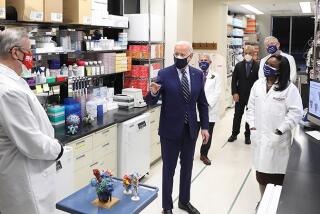Letters to the Editor: There’s a revolution coming on healthcare pricing that starts on Jan. 1
- Share via
To the editor: Obscene healthcare prices, including the $336-Band-Aid cited by columnist David Lazarus, will soon be a thing of the past thanks to forthcoming healthcare price transparency.
Beginning Jan. 1, hospitals must post their real prices, including their discounted cash and secret negotiated rates. Patients like those with a minor cut will be able to quickly compare prices and choose the least expensive option.
When healthcare consumers are empowered with price information, hospitals will be forced to end price gouging and overbilling. Clear prices will put downward pressure on costs, just like in every other sector of the economy.
In 2022, health insurers must start publishing their patient-specific, cost-sharing information so patients know exactly what they owe before they receive care or fill prescriptions. This systemwide price transparency will usher in a functional, competitive healthcare marketplace that isn’t just a Band-Aid solution, but a healthcare revolution.
Cynthia A. Fisher, Newton, Mass.
The writer is founder and chairman of PatientRightsAdvocate.org.
..
To the editor: I understand the purpose of Lazarus’ column was to highlight our seemingly chaotic and out-of-control healthcare system and why single-payer care might be a better option. I do not disagree with this, but the example he provided of a $336-Band-Aid was a poor one.
He does not factor in that someone trained and knowledgeable in healthcare needed to evaluate the injury and determine what treatment was needed. If it was determined that the wound needed suturing, would it have been worth the $336?
Just because the treatment seems simple does not reflect the value of the care. The charge for the 12001 “simple repair of superficial wounds” code on the medical bill in question is the same whether the wound was treated with wound glue or sutures.
Melody Schniepp, M.D., Oxnard
..
To the editor: Lazurus wonders if “Medicare for all” would solve problems like the $336 charged for a Band-Aid.
According to one billing statement from my supplemental private insurer, the provider charged $200; Medicare paid $94, the supplemental insurer paid $24, and I owed nothing. In another case, the provider charged $912 but received just $144 from Medicare and the insurer.
Hospitals and doctors are living rather well off what Medicare and private insurers pay them. Thus, an uninsured customer could tell a provider that they will pay what Medicare and a major insurer would pay.
This could be a step toward Medicare for all, and after all, doctors and hospitals accept these amounts every day from insured patients.
David L. Burdick, Ridgecrest, Calif.
More to Read
A cure for the common opinion
Get thought-provoking perspectives with our weekly newsletter.
You may occasionally receive promotional content from the Los Angeles Times.






